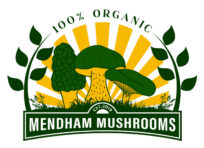Abstract
Mushroom polysaccharides are active medicinal compounds that possess immune-modulatory and anticancer properties. Currently, the mushroom polysaccharides krestin, lentinan, and polysaccharopeptides are used as anticancer drugs. They are an unexplored source of natural products with huge potential in both the medicinal and nutraceutical industries. The northern parts of Pakistan have a rich biodiversity of mushrooms that grow during different seasons of the year. Here we selected an edible Morchella esculenta (true morels) of the Ascomycota group for polysaccharide isolation and characterization. Polysaccharopeptides and polysaccharides from this mushroom were isolated using the green chemistry, hot water treatment method. Fourier transform infrared spectroscopy revealed the sugar nature and possible beta-glucan type structure of these polysaccharides. Antioxidant assays showed that the deproteinized polysaccharides have moderate free radical scavenging activity. These isolated polysaccharides exhibited good acetylcholinesterase (AChE) and butyryl cholinesterase (BChE) inhibition activities. Therefore, these polysaccharides may be valuable for the treatment of Alzheimer’s and Parkinson’s diseases. Further bioassays are needed to discover the true potential of M. esculenta polysaccharides for medicinal purposes.
Introduction
Since prehistoric times, and across different civilizations, mushrooms have been utilized as a dietary source and in medication [1]. Mushrooms possess bioactive constituents that are antioxidant, anti-inflammatory, immunomodulatory, and antidiabetic [2,3,4,5]. There are several mushrooms whose polysaccharides have been well characterized by biophysical and biochemical techniques, and their bioactivities show promise for different diseases [4,5]. Among these, Ganoderma, Trametes or Coriolus (commonly known as Turkey tail), Lentinus, Morchella, and several other genera have displayed both nutritional and medicinal properties [6]. The Pleurotus mushroom genus is one of the cultivated types, and are generally called oyster or tree mushrooms [7]. The polysaccharides and proteins of Pleurotus possess anticancer and antiviral properties [7]. Immunomodulation and anticancer activity are some of the unique properties that the mushroom polysaccharides are known for, which has caused an increase in their consumption as food over the past few decades [8,9,10]. Mushroom polysaccharides contain various types of glycosidic bonds and are thus grouped as beta-glucans, alpha-glucans, and heteroglycans [9]. Some of them interact with proteins to form polysaccharopeptides [9]. So far, three important clinically well-established antitumor polysaccharides, including lentinan and protein-containing polysaccharides like krestin, have been isolated from Lentinus species, Schizophyllum, and Turkey tails [9,11,12]. These mushrooms have quite large commercial markets in East Asian countries [9,11,12]. Chemical analyses of lentinan and schizophyllan showed that they are complete β-glucans, while the polysaccharide Krestin (PSK) is a protein-bound beta-glucan [9,11,12]. A polysaccharopeptide obtained from a strain of the Coriolus species in China also had anticancer and immune-boosting properties [9]. In Japan, for cancer treatment, a few grams of PSK is given orally to patients during chemotherapy [4]. Different biological test results of PSK showed improvement of immune functions, antiviral defense, body regulation of cholesterol, and prebiotic activity [4,13]. Although the exact mode of action of these mushroom polysaccharides has not yet been established, using them as additional adjuvants with cancer drugs may be of value in cancer treatment. The Agaricus bisporus β-glucans interact with intestinal cells and activate the immune system and enterocytes [14]. Several other species of Agaricus mushroom have been noted to contain antioxidants and have anticancer properties [15]. Because of these beneficial roles of the mushroom polysaccharides, they have become an interesting area of study in medicinal chemistry. Here, we selected Morchella esculenta mushrooms for polysaccharide isolation and purification, which were then tested for specific bioactivities.
The Morchella genus is one of the most favored mushrooms, and as such, it is highly priced [16]. The Morchella esculenta contains all the important nutrients, from carbohydrates, proteins, polyunsaturated fatty acids, secondary metabolites like phenolic compounds, etc. [17]. The methanolic extract from the mushrooms has potent antioxidant properties and antibacterial activities against different bacteria [17]. It has been observed that the utilization of Morchella esculenta polysaccharides as a food in mice increased the useful gut microbiota as well as the short-chain fatty acids in the body [18]. A 43.6 kDa purified polysaccharide from M. esculenta was shown to contain glucose, mannose, galactose, and arabinose as the monomer units [19]. An 81 kDa M. esculenta polysaccharide was shown to have the potential to cease the growth and spread of human colon cancer in HT29 cells, and its potency is dose and time dependent [2]. Several sterols and fatty acids recognized in the methanolic extract of M. esculenta fruiting bodies had antitumor activity when tested against different human lung cancer cell lines with IC50 values in the range of 157 to 278 μM [20]. A polysaccharide isolated from the mycelium of M. esculenta showed antiproliferative activity against hepatoma cell lines [21]. A heteropolysaccharide isolated from M. esculenta had anti-melanogenesis properties [22]. These properties were investigated both in vitro (B16F10 melanoma cells) and in vivo (zebrafish larvae), showing a reduction of melanin production without any cytotoxicity [22]. Thus, M. esculenta polysaccharides can be used in skin cancer treatment. The galactomannan polysaccharide isolated from Morchella esculenta enhances the immune response to different diseases [16] and modulates the immune system [23]. It has been reported that polysaccharides from Morchella conica can help treat hepatocarcinomas by reducing the generation of free radicals [21]. It has also been demonstrated that polysaccharides from Morchella conica can potentially modulate the immune system by inhibiting nitric oxide production in lipopolysaccharide-treated macrophages; thus, these polysaccharides could be used for treating inflammatory diseases [24]. The partial chemical modification of polysaccharides from Morchella angusticepes Peck, by adding a carboxymethyl group at C6 in its sugars, resulted in a reduction in cholesterol levels in rats [25]. Thus, these polysaccharides can potentially be used to lower blood and liver cholesterol levels and may be valuable for treating heart coronary diseases. The aim of this scientific work was to determine the free radical scavenging and anticholinesterase and tyrosinase properties of wild-grown M. esculenta polysaccharides in proteinized and deproteinized forms.
